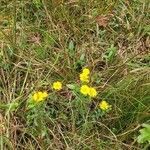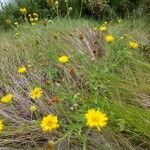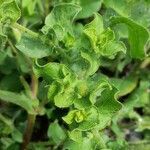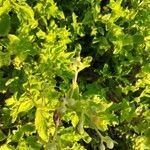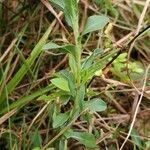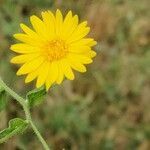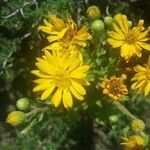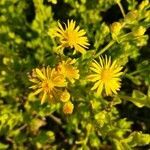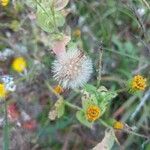Annuals or biennials, 10–200 cm (aromatic); taprooted (rarely perennating in south from proximal stem nodes). Stems 1–4+, procumbent to erect (sometimes reddish brown, proximal to distal branches well developed in larger plants), sparsely to densely hispido-strigose, sparsely to densely stipitate-glandular. Leaves: basal and proximal rarely persisting to flowering, sometimes present and withered, brown to black; basal to mid cauline petiolate (petioles 10–40 mm, bases auriculate-clasping), blades ovate to elliptic or lanceolate, 10–70 × 6–55 mm, bases cuneate to attenuate, margins flat or undulate, coarsely serrate or entire, basally long-ciliate, apices acute, faces moderately hispido-scabrous; distal sessile, blades ovate to lanceolate, 10–90 × 2–20 mm, reduced distally, bases often becoming cordate distally, subclasping or not clasping, margins entire, faces sparsely to moderately hispido-strigose, sparsely to densely stipitate-glandular. Heads 3–180+ in corymbo-paniculiform arrays, sometimes becoming profusely branched (loosely paniculiform or broadly corymbiform in larger plants), branches ascending to spreading. Peduncles 2–35 mm, sparsely to densely hispido-strigose, moderately to densely stipitate-glandular; bracts 0–4, proximal leaflike, ovate to lanceolate, reduced distally and becoming linear, faces sparsely to moderately hispido-strigose, sparsely to densely stipitate-glandular. Involucres hemispheric to campanulate, 4–8(–10) mm. Phyllaries in 4–6 series, lanceolate, sometimes strongly unequal, margins scarious and distally strigoso-ciliate, faces sparsely to densely stipitate-glandular, with 0–28 coarse, scabro-strigose hairs distally. Ray florets 15–35; laminae 3–7(–9) × 1–2 mm. Disc florets 25–60; corollas weakly ampliate, 2–9 mm, proximal throats glabrous to sparsely short-strigose, lobes 0.5–0.7 mm, glabrous. Cypselae dimorphic, obconic, ribs 2–3, (ray) triangular in cross section, 1.5–2.5 mm, faces glabrous to slightly strigose, (disc) laterally compressed, 2–4 mm, faces moderately to densely strigose; pappi 0 (ray) or (disc) tan to rust, outer of linear to triangular scales 0.25–0.6 mm, inner of 25–45 bristles 4–9 mm, longest weakly clavate. 2n = 18.
More
Taprooted, weedy annual or biennial 2–25 dm, erect or in some habitats low and spreading, glandular, especially above, and spreading-hairy; lvs ovate or oblong, dentate or subentire, the lower ones petiolate (some with a stipule-like basal expansion of the petiole), deciduous, the middle and upper sessile and clasping; invol 6–8 mm, its bracts finely glandular, and usually slightly hairy at the tip; 2n=18. Dry, often sandy places; Del. to Fla., w. to Kans. and Mex., and adventive n. to L.I. July–Sept.
